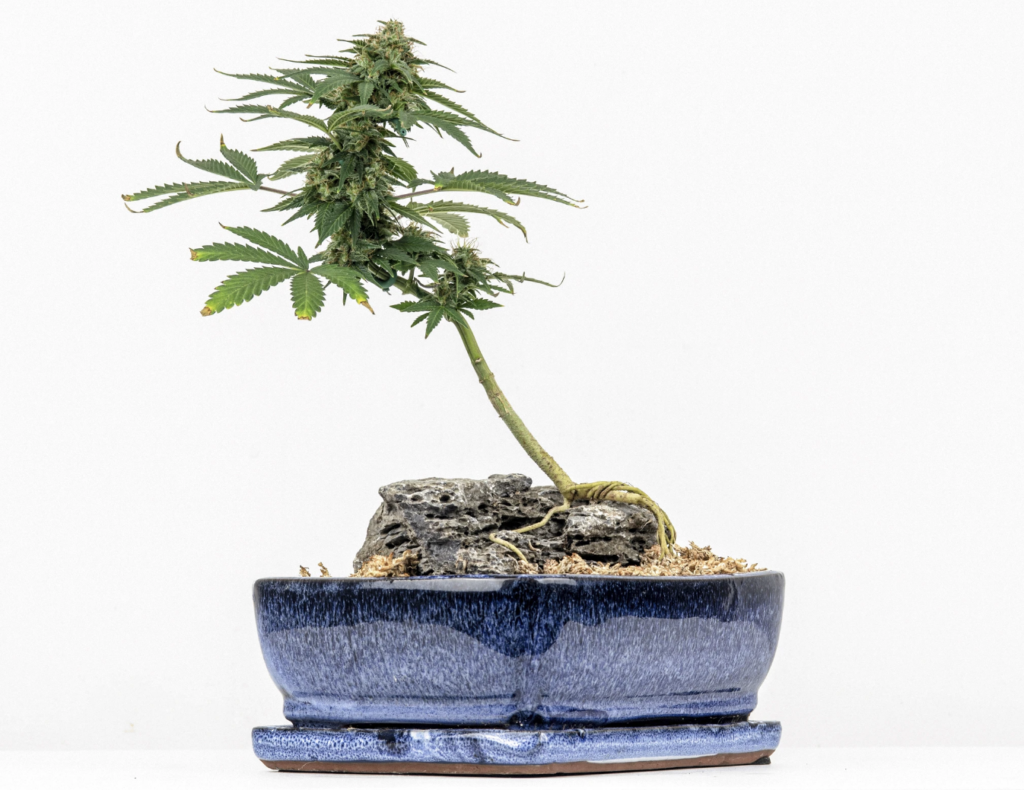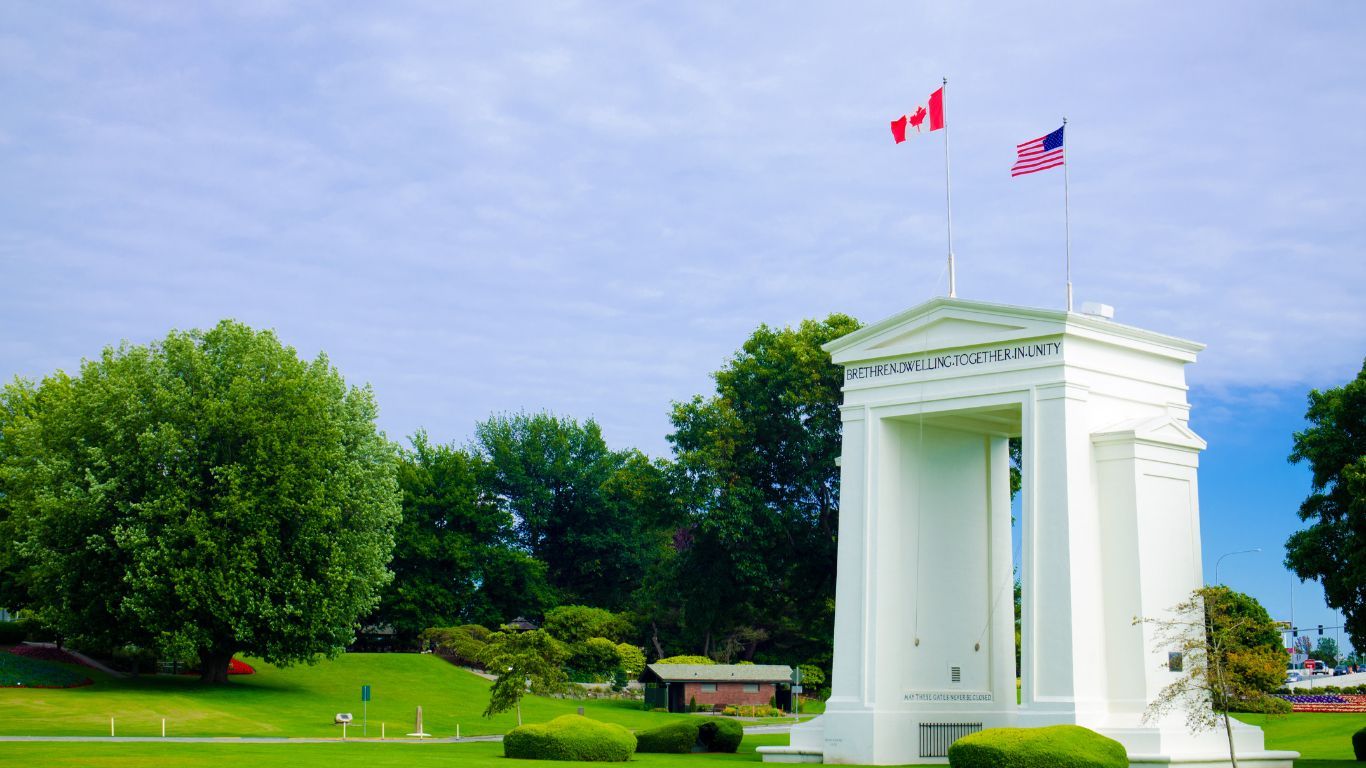
Cannabonzai is a small group of cannabis and bonsai growers and enthusiast managing an online platform of instructional videos, manuals, and books that has been growing in popularity over the past year. Producing some very intriguing images of cannabis plants in an array of peculiar positions, we thought it would be interesting to reach out to the team to learn more.
StratCann was able to catch up with their principal grower, Sharon, to learn a bit more about the motivation to explore bonsai cannabis and all Cannabonzai has to offer.
- When did you start growing cannabis? And for what purposes? (medical, for fun, etc.)
I’ve always been really interested in plants, so naturally I ended up growing cannabis just out of curiosity, probably about ten years ago. Part of it was the interest in its complexity, as well as its unique properties.
- When did you start experimenting with bonsai? Did it start with cannabis?
I ended up at the National Arboretum in 99 (Washington) D.C. a long time ago, where I visited the National Bonsai and Penjing Museum. Seeing these trees in person and realising they were tended to every day for hundreds of years changed my perspective completely. I tried my luck with a few traditional bonsai like ginseng, juniper and Japanese maple, but they didn’t make it for more than a couple of years. Eventually the concepts of cannabis and bonsai converged in a conversation with friends in 2018 and we started our Instagram and began experimenting with some of the first autoflower cannabonsai and roots-over-rock styles.
- What can you tell us about the guide?
We’ve learned a lot in the last few years of experimenting and have made a lot of mistakes, so these guides are our way of sharing those experiences to help others learn about what you can do with this unique species and cultivate a deeper understanding of nature in general.
Our two guides are focused specifically on root training and canopy training, and include high-level information on cannabis and the necessary tools to get started, our own illustrations on cannabis anatomy, training techniques, and step-by-step guides on how to grow your own cannabonsai, as well as a lot of new photos of the process.
- What has been interest in/feedback on the book so far?
We’ve had a lot of people from all over reach out with support and great questions, (even) requests for a full size coffee table book! Since the release, we’re also getting more DM’s and tags with pictures of other people’s cannabonsai and that has been so encouraging to see! We’re eager to hear feedback on the printed handbooks that are on their way soon.
We’ve learned a lot in the last few years of experimenting and have made a lot of mistakes, so these guides are our way of sharing those experiences to help others learn about what you can do with this unique species and cultivate a deeper understanding of nature in general.
- If someone is interested in starting to experiment with bonsai cannabis, what’s a good first step?
Cannabis is such a resilient plant that you’ll be able to get started and improve your techniques pretty quickly. For beginners we recommend starting with feminized autoflower varieties because they’re a bit more flexible and there’s a lot less to worry about.
You can grow a seedling to about four or five nodes in a small pot and gently coil a rubber wire from the base up the main stem. Bend the trunk and this coil while it’s still flexible as it grows, and the colas will build around the sides and you’ll have a good start for your first cannabonsai!
- What have you learned from the process of working with cannabis plants in this way?
Where do we start! We’re learning a lot about just how complex, resilient, and frankly sentient, cannabis and plants in general are. It’s been really interesting to push the boundaries of what cannabis can manifest as. Typically quite geometric and angular, cannabis can actually be worked with like any other well recognized bonsai medium into organic, flowing, and often surprising forms.
Contrary to popular belief in the bonsai community, cannabis is actually capable of producing small leaves at an old age through different leaf-size reduction techniques. Cannabis is also one of the fastest growing species to practice bonsai, but the speed of its growth can be moderated through influencing their metabolism by reducing the amount of light, water and food it receives.
- How long might a plant like this live under ideal conditions?
This would depend on a few factors – the life-spans of these plants can vary even under ideal conditions. Autoflowers have set lifespans programmed into their DNA and live for 2-3 months, but photoperiods on the other hand are considered annual because they follow the seasons to flower, produce seed, and end their cycle.
They can however be convinced that they perpetually live in spring by artificially stimulating the light schedule – tricking the plant into thinking that it doesn’t need to prepare for fall and winter. Photoperiods can be kept indefinitely in this vegetative phase, there isn’t much research into the maximum age of a cannabis plant. Our oldest is just over the one year mark now but we’ve heard of people keeping their plants around for anywhere from 5 to 15+ years! This is one of the questions we are most interested in answering as the years pass.
The speed of its growth can be moderated through influencing their metabolism by reducing the amount of light, water and food it receives.
- Have you ever considered doing online videos showing the process?
Funny you mention this – we are currently working on a series of online video tutorials! You can find them @Cannabonzai on Youtube and on our site Cannabonzai.com!
-Cheers, Sharon













